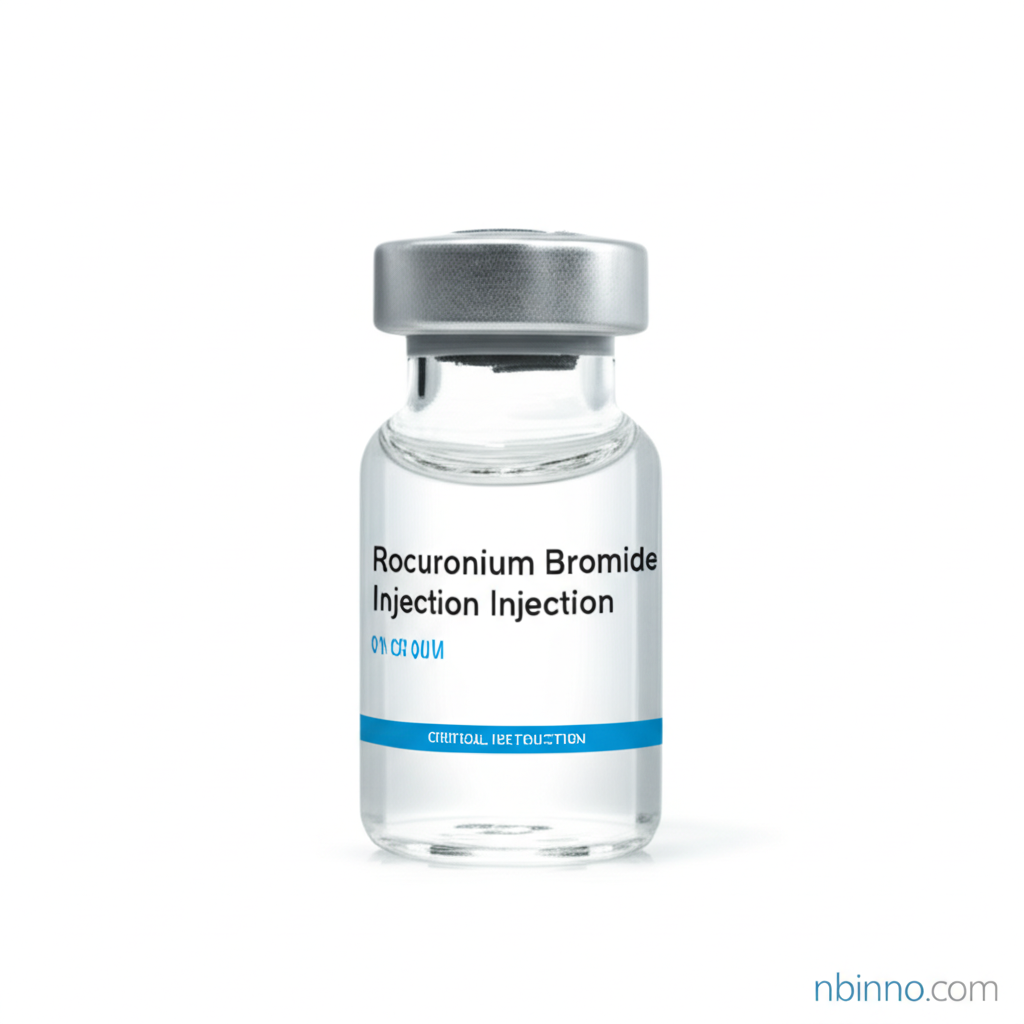Rocuronium Bromide Injection: A Key Anesthetic Adjunct
Facilitating tracheal intubation and ensuring muscle relaxation for safe surgical procedures.
Get a Quote & SampleProduct Core Value

Rocuronium Bromide Injection
Rocuronium Bromide Injection is a vital non-depolarizing neuromuscular blocking agent, essential for modern anesthesia. It serves as a critical adjunct to general anesthesia, significantly aiding in the facilitation of both rapid sequence and routine tracheal intubation. Its precise action ensures the necessary skeletal muscle relaxation required during surgical interventions or for patients undergoing mechanical ventilation.
- Explore the critical role of rocuronium bromide in anesthesia for surgical relaxation, ensuring patient safety and procedural efficiency.
- Understand the detailed rocuronium bromide injection dosage guidelines for various surgical and critical care scenarios.
- Learn about the pharmacokinetics of rocuronium bromide in pediatric patients and its specific uses.
- Discover potential rocuronium bromide side effects and how they are managed to ensure optimal patient outcomes.
Key Advantages
Rapid Intubation Facilitation
Rocuronium Bromide Injection offers rapid onset, significantly improving conditions for tracheal intubation, a crucial step in general anesthesia procedures.
Sustained Muscle Relaxation
Provides intermediate duration of skeletal muscle relaxation, vital for the smooth progression of surgical operations and patient comfort.
Versatile Application
Effectively used in both adult and pediatric patients, making it a versatile choice for a wide range of anesthetic needs in various medical settings.
Key Applications
General Anesthesia
Serves as a critical adjunct to general anesthesia, ensuring patient safety and optimizing procedural conditions during surgeries.
Tracheal Intubation
Aids in the rapid and safe facilitation of tracheal intubation, a cornerstone of airway management in surgical anesthesia.
Surgical Procedures
Provides essential skeletal muscle relaxation to facilitate surgical manipulations and improve operative outcomes.
Mechanical Ventilation
Supports patients requiring mechanical ventilation, ensuring proper synchronization and reducing respiratory distress in critical care settings.
